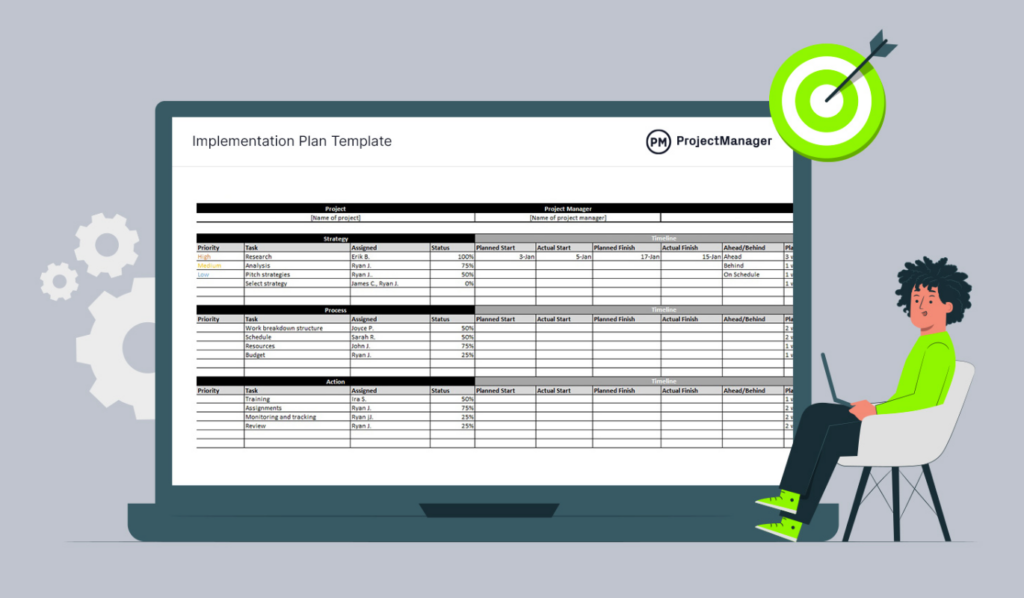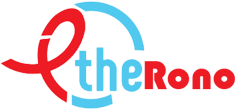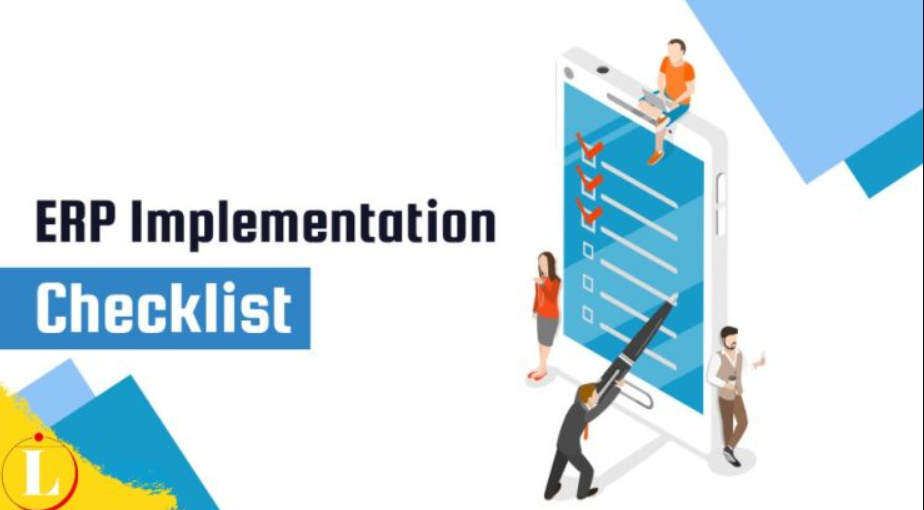Enterprise Resource Planning (ERP) systems are the backbone of modern business operations, integrating various functions such as finance, human resources, supply chain management, and customer relationship management into a single cohesive platform. The success of an ERP implementation heavily relies on the accurate and comprehensive gathering of business requirements. This critical process ensures that the chosen ERP solution aligns with the organization’s needs, processes, and strategic objectives.
To facilitate this complex task, many organizations turn to structured tools such as Excel templates, checklists, and Request for Information (RFI) documents. These resources provide a systematic approach to capturing, organizing, and prioritizing ERP requirements across different business units and functions. This article delves into the intricacies of using these tools effectively, offering insights into best practices, common pitfalls, and strategies for success in ERP requirements gathering.
Understanding ERP Requirements: A Foundation for Success
Before diving into the specifics of templates and checklists, it’s crucial to understand what constitutes ERP requirements and why they are so important. ERP requirements are detailed specifications of what an organization needs from its ERP system to support its business processes, meet regulatory compliance, and achieve its strategic goals.
Key aspects of ERP requirements include:
- Functional Requirements: These describe what the system should do, such as processing payroll, managing inventory, or generating financial reports.
- Technical Requirements: These specify the technical aspects of the system, including hardware, software, integration capabilities, and performance metrics.
- Operational Requirements: These outline how the system should operate in the context of the organization’s business processes and workflows.
- Security Requirements: These define the necessary security features and access controls to protect sensitive data and ensure compliance with regulations.
- User Requirements: These focus on the user interface, ease of use, and specific needs of different user groups within the organization.
- Reporting and Analytics Requirements: These specify the types of reports, dashboards, and analytical capabilities needed to support decision-making.
- Scalability and Future-proofing Requirements: These ensure that the ERP system can grow and adapt to the organization’s future needs.
Understanding these different types of requirements is essential for creating comprehensive and effective ERP requirements documents. It allows organizations to consider all aspects of their needs and ensures that no critical elements are overlooked during the selection and implementation process.
The ERP Requirements Excel Template: Structure and Best Practices

An Excel template is a popular tool for capturing and organizing ERP requirements due to its flexibility, familiarity, and ability to handle large amounts of structured data. A well-designed ERP requirements Excel template typically includes the following components:
- Requirement Categories: The template should be organized into logical categories that align with different business functions or modules of an ERP system (e.g., Finance, HR, Supply Chain).
- Requirement Description: A clear and concise description of each specific requirement.
- Priority Level: A way to indicate the importance of each requirement (e.g., Must-have, Nice-to-have, Optional).
- Source: Identification of who or which department requested the requirement.
- Current Process: A brief description of how the requirement is currently being met or managed.
- Desired Outcome: The expected result or benefit of implementing this requirement.
- Customization Needs: An indication of whether the requirement can be met with out-of-the-box functionality or requires customization.
- Comments: A space for additional notes, clarifications, or context.
Best practices for using an ERP requirements Excel template include:
- Involve all relevant stakeholders in the requirements gathering process to ensure comprehensive coverage.
- Use clear, specific language to describe requirements, avoiding ambiguity or jargon.
- Regularly review and update the template as requirements evolve throughout the project lifecycle.
- Use version control to track changes and maintain a history of requirement updates.
- Consider using dropdown lists for fields like priority and category to ensure consistency and ease of filtering.
- Include a glossary of terms to ensure common understanding across different departments and stakeholders.
By following these best practices, organizations can create a robust and useful ERP requirements document that serves as a solid foundation for system selection and implementation.
The ERP Requirements Checklist: Ensuring Comprehensive Coverage
While the Excel template provides a structure for capturing detailed requirements, an ERP requirements checklist serves as a high-level guide to ensure that all critical areas are considered during the requirements gathering process. A comprehensive ERP requirements checklist typically covers the following areas:
- General System Requirements
- Scalability
- Multi-language and multi-currency support
- User interface and user experience
- Mobile accessibility
- Financial Management
- General ledger
- Accounts payable and receivable
- Financial reporting and analytics
- Budgeting and forecasting
- Human Resources
- Payroll processing
- Employee self-service
- Performance management
- Recruitment and onboarding
- Supply Chain Management
- Inventory management
- Procurement
- Order management
- Warehouse management
- Manufacturing (if applicable)
- Production planning
- Quality control
- Bill of materials management
- Shop floor control
- Customer Relationship Management
- Contact and account management
- Sales pipeline management
- Customer service and support
- Marketing automation
- Business Intelligence and Reporting
- Standard reports
- Custom report creation
- Dashboards and data visualization
- Ad-hoc query capabilities
- System Integration
- Integration with existing systems
- API and web services capabilities
- Data migration tools and processes
- Security and Compliance
- User authentication and access control
- Data encryption
- Audit trails
- Compliance with relevant regulations (e.g., GDPR, HIPAA)
- Support and Maintenance
- Vendor support options
- Training and documentation
- System updates and patch management
- Disaster recovery and business continuity
Using this checklist in conjunction with the detailed Excel template ensures that no major areas are overlooked during the requirements gathering process. It also provides a structured approach to discussing requirements with various stakeholders across the organization.
Request for Information (RFI): Engaging with ERP Vendors
The Request for Information (RFI) is a crucial document in the ERP selection process, serving as a formal way to gather information from potential ERP vendors about their solutions and capabilities. The RFI typically builds upon the requirements gathered in the Excel template and checklist, presenting them in a format that allows vendors to respond directly to each requirement.
Key components of an effective ERP RFI document include:
- Company Overview: A brief introduction to your organization, its industry, size, and high-level ERP objectives.
- Project Scope: An outline of the ERP implementation’s scope, including modules required, number of users, and geographical coverage.
- Functional Requirements: Detailed requirements organized by business function or module, typically derived from the Excel template.
- Technical Requirements: Specifications related to system architecture, integration capabilities, and performance expectations.
- Implementation and Support: Questions about the vendor’s implementation methodology, timeline, training offerings, and ongoing support services.
- Pricing and Licensing: Inquiries about the vendor’s pricing model, licensing options, and total cost of ownership.
- Vendor Experience: Questions about the vendor’s experience in your industry, client references, and case studies.
- Future Roadmap: Inquiries about the vendor’s product development plans and how they align with your organization’s future needs.
When creating an RFI, consider the following best practices:
- Be clear and specific in your requirements to avoid ambiguous responses.
- Provide a standardized response format to facilitate easy comparison between vendors.
- Include a mix of yes/no questions and open-ended queries to gather comprehensive information.
- Set clear deadlines and instructions for vendor responses.
- Encourage vendors to provide additional information or suggestions beyond the specific questions asked.
The RFI process not only helps in gathering information about potential ERP solutions but also serves as an initial screening tool to shortlist vendors for more detailed evaluation.
Strategies for Effective ERP Requirements Gathering
Gathering comprehensive and accurate ERP requirements is a complex process that requires careful planning and execution. Here are some strategies to ensure the effectiveness of your requirements gathering process:
- Stakeholder Engagement: Involve representatives from all relevant departments and levels of the organization. This ensures that diverse perspectives are considered and increases buy-in for the final solution.
- Process Mapping: Before defining system requirements, map out your current business processes. This helps identify inefficiencies and areas for improvement that the new ERP system should address.
- Future-State Visioning: Encourage stakeholders to think beyond current processes and envision how they would like to work in the future. This helps in defining forward-looking requirements that support the organization’s growth and evolution.
- Prioritization Workshops: Conduct workshops to prioritize requirements collectively. This helps in distinguishing between must-have features and nice-to-have functionalities.
- Use Cases and Scenarios: Develop detailed use cases and scenarios to illustrate how the ERP system should support specific business processes. This provides context for requirements and helps vendors understand your needs more clearly.
- Iterative Approach: Treat requirements gathering as an iterative process. As stakeholders learn more about ERP capabilities and potential solutions, they may refine or add to their initial requirements.
- Benchmark Against Industry Standards: Research industry best practices and benchmark your requirements against what leading organizations in your sector are doing with ERP.
- Consider Change Management: As you gather requirements, also consider the change management aspects of implementing a new ERP system. This includes identifying potential resistance points and training needs.
- Document Assumptions and Constraints: Clearly document any assumptions made during the requirements gathering process, as well as any known constraints (e.g., budget, timeline, technical limitations).
- External Expertise: Consider engaging ERP consultants or experts who can bring industry knowledge and best practices to your requirements gathering process.
By employing these strategies, organizations can ensure a more comprehensive and effective ERP requirements gathering process, laying a strong foundation for successful system selection and implementation.
Common Pitfalls in ERP Requirements Gathering and How to Avoid Them
Despite best efforts, organizations often encounter challenges during the ERP requirements gathering process. Being aware of common pitfalls can help you navigate this complex task more effectively. Here are some frequent issues and strategies to address them:
- Overlooking Non-Functional Requirements:
- Pitfall: Focusing solely on functional requirements while neglecting non-functional aspects like performance, scalability, and user experience.
- Solution: Use a comprehensive checklist that includes both functional and non-functional requirements. Engage IT stakeholders to ensure technical considerations are adequately addressed.
- Scope Creep:
- Pitfall: Continuously adding new requirements without considering their impact on project scope, timeline, and budget.
- Solution: Implement a formal change control process for requirements. Regularly review and prioritize requirements against project constraints.
- Lack of Executive Sponsorship:
- Pitfall: Insufficient support from top management leading to inadequate resources and stakeholder engagement.
- Solution: Secure executive sponsorship early in the process. Regularly communicate the importance of thorough requirements gathering to leadership.
- Ignoring Integration Needs:
- Pitfall: Failing to consider how the ERP system will integrate with existing or future systems.
- Solution: Include integration requirements in your checklist. Map out your entire IT ecosystem to identify all potential integration points.
- Overemphasis on Current Processes:
- Pitfall: Defining requirements based solely on current processes, missing opportunities for improvement.
- Solution: Encourage stakeholders to think beyond current limitations. Use process improvement techniques to identify inefficiencies that the new ERP can address.
- Insufficient Detail:
- Pitfall: Capturing requirements at too high a level, leading to ambiguity and potential misunderstandings.
- Solution: Use a structured template that prompts for specific details. Encourage stakeholders to provide concrete examples and use cases.
- Neglecting User Adoption Considerations:
- Pitfall: Focusing on system functionality without considering how users will adapt to the new system.
- Solution: Include user experience and training requirements in your gathering process. Involve end-users in the requirements definition to ensure usability needs are met.
- Inadequate Vendor Research:
- Pitfall: Defining requirements without understanding what’s possible or standard in modern ERP systems.
- Solution: Conduct preliminary research on ERP capabilities before finalizing requirements. Consider attending ERP vendor demonstrations to understand current technology offerings.
- Siloed Requirements Gathering:
- Pitfall: Collecting requirements from different departments in isolation, leading to conflicting or redundant requirements.
- Solution: Use cross-functional teams for requirements gathering. Conduct workshops that bring together stakeholders from different areas to discuss and align on requirements.
- Neglecting Compliance and Security:
- Pitfall: Overlooking industry-specific compliance needs or data security requirements.
- Solution: Include compliance and security experts in your requirements gathering team. Research relevant regulations and industry standards to ensure all compliance needs are captured.
By being aware of these potential pitfalls and implementing strategies to avoid them, organizations can significantly improve the quality and comprehensiveness of their ERP requirements gathering process, setting the stage for a more successful ERP selection and implementation.
Conclusion: Leveraging Templates, Checklists, and RFIs for ERP Success
The process of gathering and documenting ERP requirements is a critical foundation for any successful ERP implementation. By utilizing tools such as Excel templates, comprehensive checklists, and well-structured RFI documents, organizations can ensure a thorough and systematic approach to this crucial task.
The Excel template provides a structured format for capturing detailed requirements across various business functions, allowing for easy organization, prioritization, and analysis of needs. The ERP requirements checklist serves as a high-level guide, ensuring that all critical areas are considered and no major requirements are overlooked. The RFI document translates these requirements into a format that engages potential vendors, facilitating the evaluation and selection process.
However, it’s important to remember that these tools are just that – tools. Their effectiveness depends on how they are used within the broader context of the ERP selection and implementation process. Successful ERP requirements gathering requires a combination of thorough planning, stakeholder engagement, strategic thinking, and attention to detail.
By following the strategies outlined in this article and being mindful of common pitfalls, organizations can create a comprehensive and accurate set of ERP requirements. This not only facilitates the selection of the most appropriate ERP solution but also lays the groundwork for a smoother implementation process and, ultimately, a system that truly meets the organization’s needs and supports its long-term success.
As technology continues to evolve and business needs become increasingly complex, the importance of thorough ERP requirements gathering only grows. Organizations that invest time and resources in this critical process are better positioned to leverage their ERP systems as strategic assets, driving efficiency, innovation, and competitive advantage in an ever-changing business landscape.

